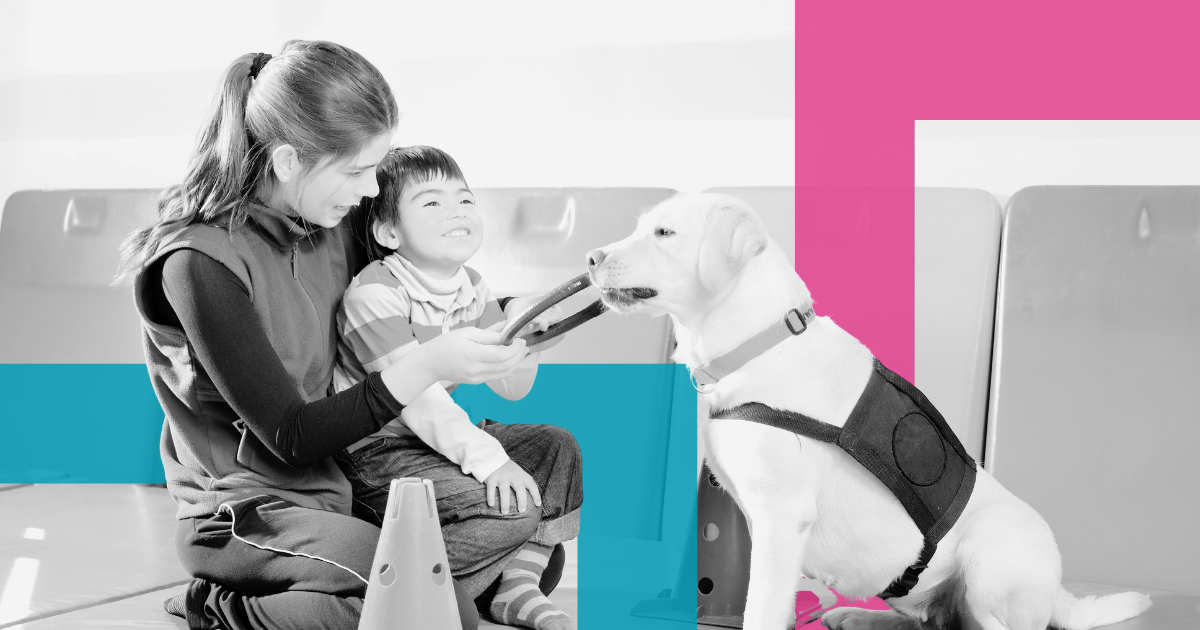Article
Therapy dogs in school settings: Wonderful educational outcomes but have you managed the risks?

Recent media reports such as this one from the ABC, highlight how therapy dogs in schools can assist children with their learning, social interactions and even to cope with anxiety and other similar issues. This quote from Perth Now, sums up the positive benefits provided by therapy dogs that has been highlighted in many of the media reports:
“Their success in reducing stress, combating anxiety and building students’ social skills as they bond over the dogs has prompted many other schools to consider the benefits of furry, four-legged classroom helpers.”
St. Brigid’s Primary School in Perth, WA, has a dedicated section of their school website for their Wellness Dog, “Kenzie”. Kudos to this school. Not only have they outlined the positive outcomes associated with the support provided by Kenzie, but they have also publicly explained how their program works and they have posted their Wellbeing Dog Policy for all parents and the community to view. Their website states:
“The benefits of a Wellness Dog at school are endless. They can reduce stress, anxiety, depression, ease loneliness, encourage exercise and playfulness and even improve your cardiovascular health. Caring for a dog can help children grow up more secure and active while providing valuable companionship. The intentions of the Wellness Dog are to try and reduce and alleviate the amount of stress, anxiety and other social and emotional concerns, and develop a sense of belonging within our children at St Brigid’s Primary School.”
In the journal, Frontiers in Veterinary Science, the authors note:
“Therapy dogs in educational settings have gained traction in recent times. Increasingly, dogs have provided therapeutic support in early education settings, primary and secondary schools, as well as university settings to support students' well-being, promote a sense of belonging in school, reduce stress and anxiety, and even facilitate learning. Across the globe, the incorporation of a therapy dog as part of a school’s programs and activities such as dog-assisted reading programs, has increased exponentially in prevalence.”
Defining the Role of the Therapy (or Support) Dog
Research into this topic has found that there are many names given for dogs that are brought onto school campuses to assist students and also staff in relation to emotional wellbeing, mental health etc. They can be referred to as therapy or PAT dogs, educational support dogs, support dogs, wellness dogs and more recently ‘Story Dogs’.
In an ABC article, Laura Tingle (a youth worker) is quoted as saying that there is a difference between assistance dogs and therapy dogs. "An assistance or service dog works one-on-one with the person that they need to help," she said. "Therapy dogs [are] here for the therapy of everyone who attends. When we think in terms of therapy, we don't really think in terms of just one person but for everyone." Assistance dogs used to be referred to as “guide dogs” in common parlance.
If a school makes the decision to allow a therapy dog on campus, then they need to explicitly define the role of the therapy dog and ensure that there are very clear rules regarding the overall functions of the dog. If the school is responding to a request from a staff member, parent or student to use their own animal, they need to ascertain if the dog fits the definition, the rules and the type of dog that they will allow on campus.
There are many organisations that can assist schools to identify the type of therapy dog that may best meet the needs of the children at the school. Organisations such as the Story Dogs program and PAWS can all provide therapy dogs for a school although each organisation has a slightly different approach.
Legislation Around the Country
The table below provides a brief snapshot of the legislation and some Department of Education documents that may be available for reference for schools in each state or territory. The table includes information relating to assistance dogs even though assistance dogs are not the focus of this article.
What we have not included, due to the many local jurisdictions, are the additional local government bylaws regarding dogs. However, these would also need to be reviewed and assessed by schools before they permit the use of therapy dogs on campus.
| Jurisdiction | Support Dog Legislation and Guidelines |
| Cth |
|
| ACT |
|
| NSW |
|
|
Northern Territory |
|
| Queensland |
|
|
South Australia |
|
| Tasmania |
|
|
Western Australia |
|
The Hazards That Must Be Managed
Despite the many benefits that have been associated with the use of therapy dogs in schools, there are several risks that can arise from introducing a therapy dog onto a school campus.
According to Frontiers in Veterinary Science, the primary concerns raised by schools that have had requests for the introduction of therapy dogs have included legal implications and liability (for injuries), allergy and asthma issues, hygiene and sanitation issues, cultural differences, fear of dogs and funding/administrative support that would be required.
Schools that are contemplating approving a therapy dog on their campus would need to identify possible hazards and then develop risk assessments and controls to mitigate against the risks.
There are several hazards associated with having dogs at a school. If we use the list of concerns that Frontiers in Veterinary Science has noted, these hazards include:
- a dog that is too young or has an inappropriate temperament
- a dog may bite or injure a person, for example, tripping up or dragging a child that is holding its leash
- a person may be allergic to dog hair (dander) and its presence in a classroom may trigger asthma attacks or even anaphylactic reactions in students or staff
- a person may have a fear of dogs, and this could be exacerbated by the presence of a dog in their classroom
- certain cultures consider dogs to be unsanitary, for example, some people believe that dogs transmit fungal infections such as ‘ringworm’
- the presence of animal faeces on school ovals and property could result in medical issues if children have open cuts etc that come into contact with faecal matter, for example, golden staph infections.
There can also be considerable funding and administration costs associated with having full time therapy dogs in schools that include both animal and handler training (and general staff training) and ongoing costs for veterinary treatments, infection control and cleaning, licensing and so forth.
Story Dogs has a section in their School Information pack that identifies and offers schools advice regarding how to manage the risks of having a dog at school. However, their dogs only attend school for a maximum of two hours per week.
It should also be noted that this article does not address the issue of parents or visitors bringing their own family pets onto school grounds at pick up and drop off times or at other times such as weekend ‘busy-bees’, school fairs etc. Schools need to develop their own specific rules and policies regarding community members bringing non-authorised pets onto the school campus or to any school sanctioned event.
Identifying the Risks
The risks associated with therapy dogs need to be identified and managed based on the type of dog that will be introduced and the duration of time that it may spend on campus.
The overarching risk will always be duty of care. If the school fails to provide an adequate duty of care, it does not matter which hazard eventuates, it could still be seen as a breach of the duty of care.
Of course, it is highly recommended that, before going into all the minutiae associated with the possibility of having a therapy dog on campus, schools check that their insurance company would cover them for an injury or damage caused by an animal if the animal was on site with the knowledge and permission of the school.
Conclusion
There is no doubt whatsoever that therapy dogs, however named, have been the catalyst for some truly wonderful student/staff/animal interactions and that they have been able to provide both general support and assistance for children in schools.
Nevertheless, before allowing any therapy animal onto campus, a school needs to ensure that they identify the types of risks that this presents and manage those risks effectively. One badly injured child could negate all the wonderful work and outcomes that a therapy dog could bring to a school.
About the Author

Craig D’cruz
Resources you may like
Article
Cyber security and AI in schools: emerging risks and governance imperatives
In an era where artificial intelligence (AI) tools are becoming as commonplace as calculators once...
Read MoreArticle
Under 16 social media 'ban’: an explainer for schools
The Australian Government passed a new law called the Online Safety Amendment (Social Media Minimum...
Read MoreArticle
Risk management essentials for schools
Schools face an increasingly complex landscape of risks every day; from safety hazards on school...
Read More
